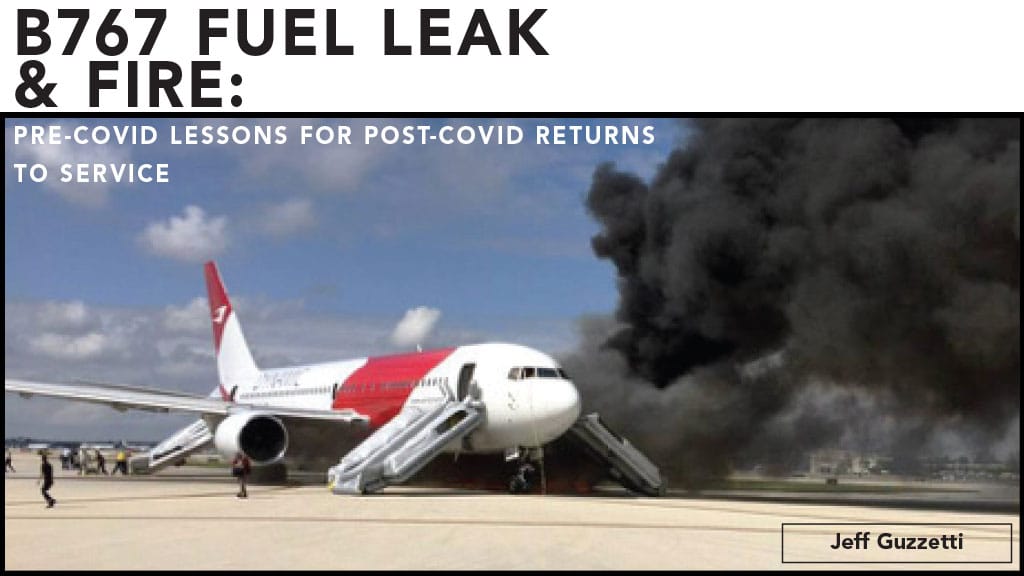Parking an airplane for an extended period of time – like most airlines have done during the COVID-19 Pandemic — introduces uncertainty and risk, especially if the maintenance performed prior to storage and later during return to service (RTS) is not properly executed. The actions taken by each person involved in these maintenance events are critical to ensuring the airworthiness of the airplane. A recent example of this was evident in an FAA emergency airworthiness directive issued last July for inspections of older Boeing 737 aircraft after four engine failures occurred due to a stuck bleed air check valve from corrosion. These airplanes were all parked due to the recent pandemic prior to RTS.
However, these same issues have been well-documented in other accidents and incidents long before COVID-19. Case-in-point: Dynamic Airways flight 405 on October 28, 2015.
The weather in Washington DC was unseasonably warm that day. As I ate lunch outside with some of my colleagues in the FAA Accident Investigation Division, a call came in from the Communication Center. The left wing of an airliner was engulfed in flames on the taxiway at the Fort Lauderdale-Hollywood International Airport (Graphic 1). One person ran behind the still-operating right engine and was blown to the ground, receiving serious injuries. Even though many passengers insanely held onto their carry-on bags as they slowly evacuated a burning airplane, no one was killed. Passengers were streaming down emergency exit slides and spilling onto the tarmac. A relaxing lunch with my co-workers would have to wait for another day.
Immediate Indications of a Problem
It was known early on from media and airport sources that flight 405 –– a Boeing 767-200ER powered by two Pratt & Whitney JT7D-7 engines –– had experienced a massive fuel leak near its left engine about four minutes after it pushed back from Gate E9. The crew was in contact with an FAA air traffic controller (ATC) ground controller at the time of the event, thus triggering an internal FAA “services rendered telecon” — or “SRT” — about an hour after the notification of the accident. Hosting an SRT was standard FAA procedure for high-visibility events so that key ATC managers –– and investigators in our division –– could get briefed on the event and have the opportunity to listen to the raw ATC voice recordings.
The ATC playback in this case revealed that the wide-body jet was taxiing for takeoff for a scheduled charter flight to Caracas, Venezuela when another airplane — taxiing behind flight 405 — radioed that something was wrong: “Hey…out of the left engine. Looks like its leaking…I don’t know if its fuel or what.” The FAA ground controller responded with: “Okay. Dynamic four zero five heavy, did you copy?” The 767 crew replied: “Yes sir, we copy,” and then requested to return to the ramp. Shortly after the controller cleared the leaking jet to return, another voice from an undetermined origin shrieked over the frequency. “Engine’s on fire! Engine’s on fire!”
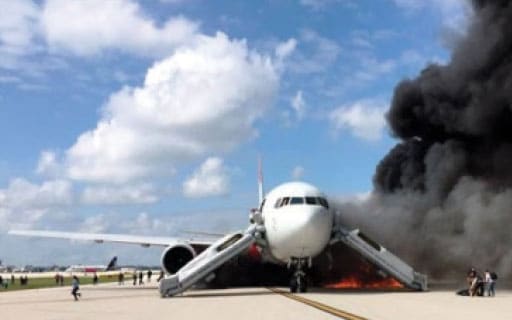
After the SRT concluded, I learned that the NTSB was launching a small “go-team” of five investigators from its headquarters offices located just across the street from my office. The team consisted of the investigator-in-charge and four NTSB “Group Chairmen” –– specialists in systems, powerplants, maintenance records, and survival factors. The NTSB also invited investigators and experts from Pratt & Whitney, Boeing, and Dynamic Airways to assist.
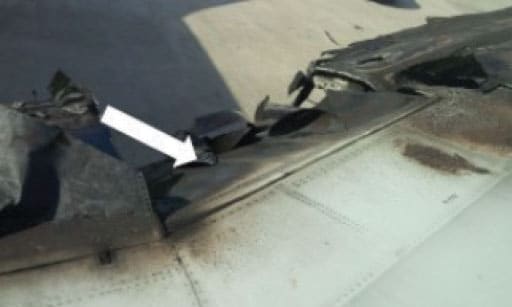
By statute, the FAA did not need an invitation. In its wisdom, Congress granted the FAA the right to participate in all NTSB aviation investigations because FAA regulates the industry, while the NTSB leads independent investigations and only makes recommendations. I launched Eric West –– our most senior air safety investigator –– to be the FAA coordinator for all agency support to the NTSB. Eric was a former charter pilot from Boston who was also a certified mechanic with inspection authorization. He had been an FAA inspector and accident investigator for two decades. Eric was assisted by FAA specialists for each of the NTSB’s four specialty groups who arrived at Ft. Lauderdale from various FAA offices across the country.
Examining the Wreckage for Clues
When Eric and the other investigators arrived at the scene later that day, their cursory look inside the left engine revealed no evidence of an uncontained engine failure or internal damage. Instead, it was clear that a significant fuel leak and subsequent fire occurred in the left engine strut and nacelle during taxi. The lower inboard portions of the left wing, left engine cowling, and left fuselage center section were badly burned (see Graphic 2). A puddle of fuel with tire tracks from the airplane provided more clues (Graphic 3). Fortunately, the captain cut-off the fuel when the fire began to rage, and it was quickly extinguished by airport firefighters before the flames and smoke were able to penetrate the cabin. Given the passengers’ propensity to remain on the burning airplane as they grasped for their backpacks, purses, and other items, Eric was convinced the local authorities would have required a lot of body bags if the cabin would have been compromised with smoke and flames.
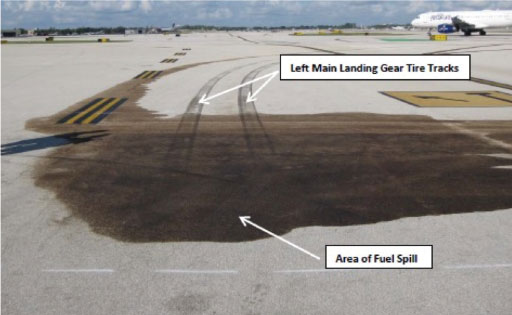
During a closer examination of the left engine and strut the following day, investigators noted that a fuel coupling assembly — known as a “Wiggins coupling” — was found separated. Indications of fuel leakage were observed at the flange interface of the fuel supply lines where the coupling had separated, including discoloration from fluid pooling in the strut compartments and streaking down the left engine cowling (see Graphic 4).
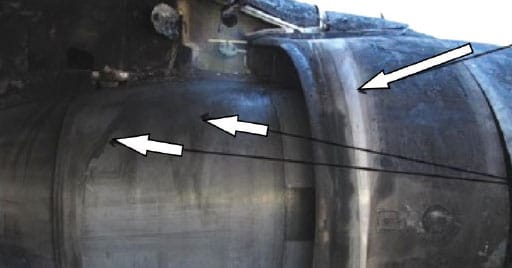
What investigators found next was disturbing. No safety lockwire was present on either the body or the nut side of the fuel coupling as required in the Boeing aircraft maintenance manual (AMM), and no broken lockwire was recovered in the surrounding strut compartments. (See Graphics 5 & 6).
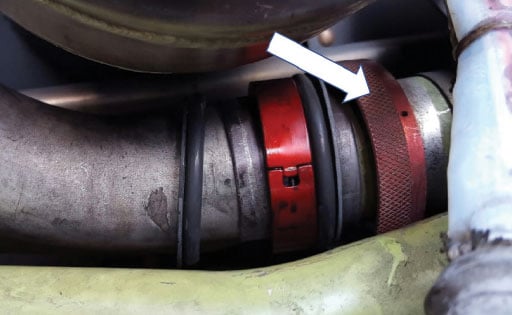
The affected coupling was downstream of the front spar Wiggins fitting which was located in the upper flammable fluid leak zone of the aft upper strut area (graphic 7). The outer couplings (parts 117 & 113 denoted by arrows in graphic 7) are designed to be threaded together, and then lock-wired to prevent the coupling from loosening under vibration.
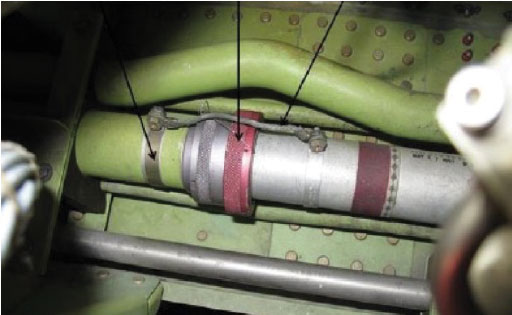
Eric called back to the office to inform me that Dynamic Airways issued a Fleet Campaign Directive after the Wiggins coupling discovery to inspect the remainder of their aircraft to ensure proper installation of the fuel line coupling assemblies. No other instances of improper installation were found.
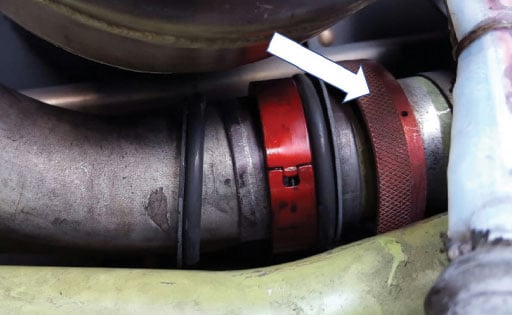
Determining How the Airplane “Lived”
Like performing an autopsy of a deceased person, investigators must determine how an airplane “lived” before it “died” in an accident. In this case, the NTSB maintenance records group pored over thousands of aircraft records. The accident airplane was “born” at Boeing in 1986 — nearly 20 years before the accident. The original owner of the 767 was Kuwait Airlines, but it was then purchased and operated by several more airlines, domestically and internationally, until 2006. At that point, a leasing company purchased the airplane and leased it out. Six years later, the leading company sent the airplane to a maintenance facility in Michigan in August 2012 to have a “4C” Check accomplished. Each C-check must be accomplished at intervals of 18 months, 6,000 hours or 3,000 cycles. It was during this 4C check when the Wiggins coupling would have been addressed. Following the 4C check, the airplane was flown to Goodyear, Arizona on November 12, 2012 to be stored.
Three long years later, on April 15, 2015, the leasing company ferried the airplane back to the same Michigan maintenance shop for a “6C” check and other work in preparation for lease to Dynamic Airways. One of the required maintenance tasks during this time involved a visual inspection of the fuel feed line components, including the Wiggins coupling. The Boeing AMM called for a “Zonal Inspection (General Visual)” of the area at each C-check maintenance interval. Following this maintenance, the airline took possession of the 767 on June 25, 2015, the FAA accomplished a conformity inspection on August 29, 2015, and the airplane was returned to service on September 15, 2015 – six weeks prior to the accident in Ft. Lauderdale.
The NTSB interviewed the mechanics who worked on the airplane during the 2012 and 2015 maintenance periods. All of them seemed qualified and experienced, and none of them recalled specifically working on the accident airplane. Regardless, both personnel who were involved in these two maintenance checks should have caught the missing lockwire.
The Probable Cause and Lessons Learned
The NTSB final report on the accident was released last summer in the midst of the COVID pandemic. The report concluded that the probable cause was the separation of the fuel line Wiggins coupling and subsequent fuel leak “… due to the failure of maintenance personnel to install the required safety lockwire.” In the analysis section of the report, the NTSB said that the missing safety wire “… was the result of an error by the third-party maintenance provider”. The agency also criticized the flight crew for initiating the emergency evacuation while the right engine was still running, and the passengers who decided to evacuate from a flaming airplane only after grabbing their carry-on bags.
The lessons learned from the flight 405 fire are obvious. Operator experience shows that dispatch reliability is higher and maintenance problems are fewer for airplanes flying in regular service as compared to airplanes used sporadically. When the airplane is in service, flight crews monitor airplane systems from the cockpit, and maintenance personnel perform preventative maintenance, regular inspections and repair procedures. When an airplane is parked, maintenance tasks can be missed, the environment can cause problems, and complacency can set it.
Last June, the International Air Transport Association (IATA) published “Guidance for Managing Aircraft Airworthiness for Operations During and Post Pandemic” that provides helpful information for airlines and maintenance facilities with regard to properly returning a stored airplane to service. A few months later, in November 2020, the European Union Aviation Safety Agency (EASA) published “Return to service of aircraft after storage: Guidelines in relation to the COVID-19 pandemic” in November 2020.
An unprecedented number of aircraft have been parked due to the COVID-19 pandemic. Gradually, as travel restrictions are lifted and as operators prepare to resume passenger flights, these aircraft will need to be returned to service. Due to the high number of aircraft affected by the pandemic, and with limited maintenance resources available to perform the work because of it, organizations should expect to experience difficulties and increased risks. The actions taken by each person involved in returning the airplanes to service are critical to ensuring the airworthiness of the airplane.
